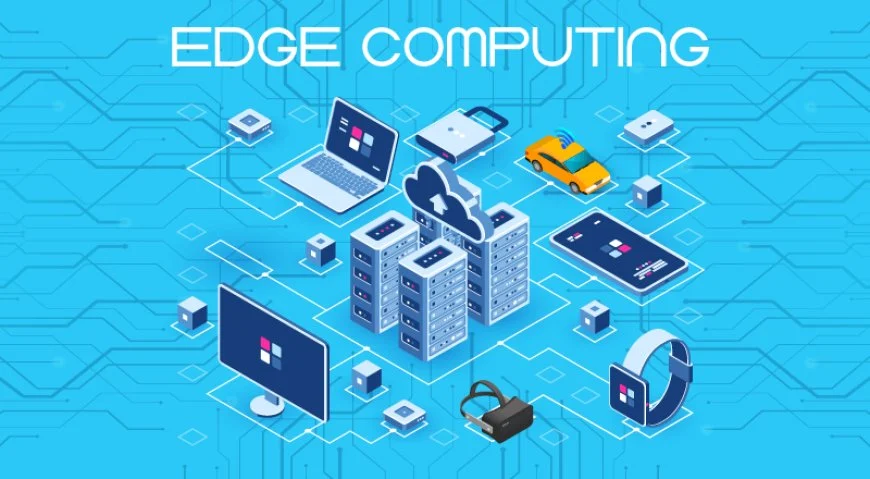Edge Computing: The Next Frontier in Data Processing is revolutionizing the way data is being processed and handled. This cutting-edge technology enables data to be processed closer to its source, leading to faster processing times and reduced latency. With the rise of IoT devices and the increasing volume of data being generated, Edge Computing has become an essential solution for efficient data processing.
As Edge Computing gains momentum, it is important to understand its impact on the industry. This technology not only improves data processing speed, but also enhances security by keeping sensitive data within the local network. Additionally, Edge Computing reduces the strain on centralized data centers, leading to more efficient use of resources. Its ability to process data in real-time is also crucial for applications such as autonomous vehicles and remote monitoring systems. Overall, Edge Computing offers a decentralized and robust approach to data processing, addressing the challenges of traditional cloud-based systems.
What is Edge Computing?
Edge computing is a distributed computing paradigm that brings computation and data storage closer to the location where it is needed, improving response times and saving bandwidth. In edge computing, data is processed by the device itself or by a local computer or server, rather than being transmitted to a centralized data center for processing.
By moving data processing closer to the source of the data, edge computing reduces the latency and enables real-time processing of data. This is particularly important for applications that require immediate or near-immediate processing, such as autonomous vehicles, industrial automation, and augmented reality.
How Does Edge Computing Work?
Edge computing works by placing small-scale data centers, known as edge servers or edge nodes, closer to the location where data is being generated. These edge nodes can be located in various places, such as factory floors, retail stores, or even on connected devices themselves. When data is generated, it is processed locally at the edge node, and only relevant or summarized data is sent to the central data center.
This approach reduces the amount of data that needs to be transmitted over the network, minimizing bandwidth usage and reducing latency. Edge computing also allows for more efficient use of resources, as data is processed closer to where it is needed, rather than being sent back and forth to a centralized data center.
Benefits of Edge Computing
Edge computing offers several benefits, including reduced latency, improved reliability, and enhanced security. By processing data closer to the source, edge computing reduces the time it takes for data to travel back and forth between the device and a centralized data center, leading to faster response times and improved user experiences.
Additionally, edge computing can improve reliability by enabling applications to continue functioning even if there is a loss of connectivity to the central data center. This is particularly important for mission-critical applications in industries such as healthcare, finance, and manufacturing.
Challenges of Edge Computing
While edge computing offers many benefits, it also presents several challenges. One of the main challenges is managing and securing a large number of distributed edge nodes. Ensuring that these nodes are properly configured, updated, and secured against potential cyber threats can be a complex task.
Another challenge is the potential for increased complexity in application development and deployment. Developers need to consider the diversity of edge devices and the varying network conditions they may encounter, which can add complexity to the development and testing of edge applications.
Use Cases of Edge Computing
Edge computing has a wide range of use cases across various industries. In the healthcare industry, for example, edge computing can be used to process and analyze patient data in real time, enabling remote monitoring and diagnosis. In the retail industry, edge computing can be used to personalize customer experiences and optimize inventory management in stores.
In the manufacturing sector, edge computing can enable predictive maintenance of machinery and equipment, reducing downtime and improving operational efficiency. Additionally, in the transportation industry, edge computing can be used to enable real-time monitoring and decision-making for autonomous vehicles and smart traffic management systems.
Future Trends in Edge Computing
As edge computing continues to evolve, several trends are shaping the future of this technology. One of these trends is the integration of edge computing with 5G networks, which will enable even lower latency and higher bandwidth for edge applications. This integration will be particularly important for applications such as virtual reality and augmented reality.
Another trend is the increasing use of artificial intelligence and machine learning at the edge. By deploying AI and ML models directly on edge devices, organizations can process and analyze data in real time, enabling more intelligent and autonomous decision-making at the edge.
Edge Computing vs. Cloud Computing
Edge computing and cloud computing are often compared, as they both involve processing and storing data. However, the key difference lies in the location where data processing occurs. In cloud computing, data is processed in centralized data centers, while in edge computing, data is processed closer to the source, at the “edge” of the network.
Cloud computing is well-suited for applications that require massive scalability and centralized processing, while edge computing is ideal for applications that require low latency, real-time processing, and efficient use of network bandwidth. In some cases, organizations may choose to use a combination of both edge and cloud computing to meet the needs of their applications.
Conclusion
Edge computing represents the next frontier in data processing, enabling real-time, low-latency processing of data at the source. With its ability to reduce latency, improve reliability, and enhance security, edge computing is poised to play a crucial role in enabling a wide range of innovative applications across industries. As the technology continues to evolve and integrate with other advancements such as 5G and AI, the potential for edge computing to transform the way we process and analyze data is vast.
| What is Edge Computing? | Edge computing is a distributed computing paradigm that brings computation and data storage closer to the location where it is needed, improving response times and saving bandwidth. |
|---|---|
| Key Features | Low latency, real-time data processing, improved security, reduced data traffic, and enhanced scalability. |
| Applications | IoT devices, autonomous vehicles, smart cities, industrial automation, and immersive technologies like AR/VR. |
| Challenges | Managing distributed infrastructure, ensuring data security and privacy, and optimizing resource allocation. |
| Benefits | Improved performance, cost savings, enhanced reliability, and better user experiences. |



